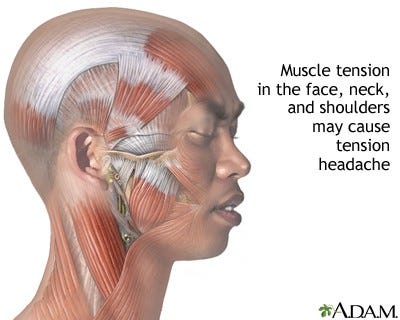Understanding Headaches: Causes and Pain Relief Mechanisms
Written on
Chapter 1: The Struggle with Headaches
Headaches can be a true nightmare.
I must confess, I’m quite sensitive when it comes to headaches. When one strikes, my entire world seems to crumble. I find myself squinting, hunting for Advil and Tiger Balm throughout my apartment, and ultimately retreating to bed, where I lie dormant until the agony subsides.
Recently, I endured a headache so intense that it left me in a dazed state for several hours. It began in the early morning, and I woke up to a piercing pain encircling the top of my head. Lying down was not an option, as it only intensified the discomfort. After turning off all the lights, I found myself repeatedly taking hot showers, seeking any sensation that might distract me from the pain.
Once the ordeal finally came to an end, thanks to the miraculous effects of Advil, I decided to investigate the underlying causes of headaches and how exactly Advil works to relieve the discomfort.
Section 1.1: What Exactly Is a Headache?
According to the International Headache Society, there are two primary types of headaches: Primary and Secondary.
Primary headaches are standalone conditions caused directly by the overactivity of pain-sensitive structures in the head. Interestingly, the brain itself does not feel pain; instead, it’s the nerves, blood vessels, and muscles in the head and neck that trigger these headaches.
On the other hand, secondary headaches arise from an underlying condition that manifests as a headache. For instance, both the flu and hangovers can lead to secondary headaches.
Subsection 1.1.1: Tension Headaches

The most prevalent type of primary headache is the tension headache, which accounts for approximately 90% of all headaches. The Mayo Clinic describes a tension headache as a mild to moderate pain that feels like a tight band around the head. Additional symptoms may include tenderness in the neck and shoulder muscles.
Tension headaches occur due to the contraction of neck and scalp muscles, often triggered by stress, anxiety, head injuries, or depression. These muscle contractions can lead to the sensation of pain.
Section 1.2: Understanding Migraines
Another common headache type is the migraine, which many might recognize. Migraines are typically characterized by throbbing pain on one side of the head.
Statistics reveal that migraines predominantly affect women, with 18% reporting the condition compared to 6% of men. They are most prevalent among individuals aged between their mid-thirties and mid-fifties, with higher incidences in lower income groups and among Caucasians.
Research indicates that migraines are caused by unregulated nerve cells sending signals to blood vessels to release a chemical called prostaglandins. This chemical triggers an inflammatory response, resulting in blood vessel swelling, which is the source of the intense pain associated with migraines.

Chapter 2: How Advil Provides Relief
The first video discusses various rescue medications specifically for migraine attacks, detailing how these drugs can alleviate the debilitating pain.
The second video covers the pharmacology of migraine medications, explaining how they interact with the body to reduce pain.
Now, why does Advil work for me? Out of all the pain relief options I’ve tried, Advil has proven to be the most effective. Because of this, I keep several supplies—one in my purse, one by my bed, and another at my desk—just in case. While I don’t recommend excessive use of this medication, it’s reassuring to know I have it on hand to combat any headache that may arise.
Advil contains Ibuprofen, which is part of a class of drugs known as NSAIDs (non-steroidal anti-inflammatory drugs). Other common NSAIDs include Motrin and Aleve. These medications work by blocking the body’s inflammatory response, which is often the source of pain.
When the body thinks it has sustained an injury, it releases prostaglandins near the affected area. These chemicals are responsible for the inflammation that causes blood vessel swelling. What Advil and similar NSAIDs do is inhibit the enzyme Cyclooxygenase (COX), which is crucial for producing prostaglandins.
By limiting the presence of prostaglandins, NSAIDs help reduce inflammation and, consequently, alleviate pain symptoms.
Headaches are undeniably distressing, leading to reduced productivity and a diminished sense of well-being. Just thinking about them makes me anxious that one might be lurking around the corner.
There are simple lifestyle changes you can make to help prevent headaches, such as better stress management and improved nutrition. If all else fails, don’t hesitate to reach out to me—I’ll likely have some Advil handy.